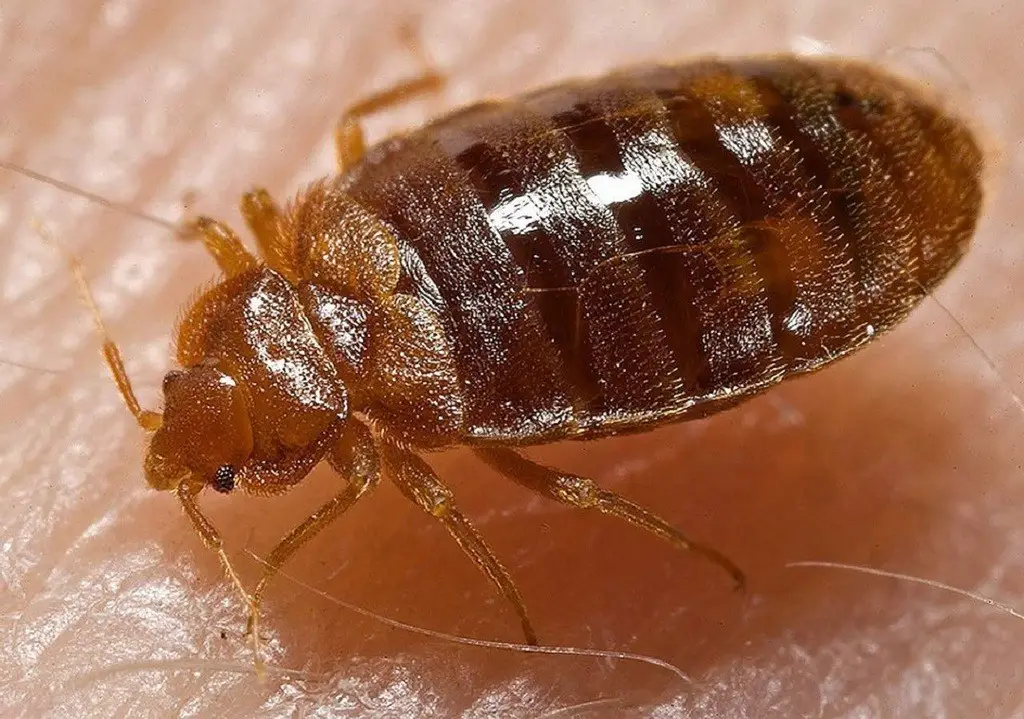Can UV C Light Kill Bedbugs: Shedding Light on the Truth
Bedbugs are the worst. So, with all the hype over UV C light destroying insects, bacteria, and viruses, surely it will kill bugs too, won’t it? Waking up itchy and covered in bites that make you look like the worst version of yourself before you’re even out of bed is awful. When you have kids, or even guests over it’s embarrassing as well as horrifying. Once you know the truth, there’s no reason to keep suffering. It can be incredibly difficult to sort fact from fiction, so I’m here to explain everything you need to know about UV C and your bedbug infestation. Getting rid of bedbugs doesn’t have to be complicated. Furthermore, keeping the little pests away is vital to your health, and possibly your sanity. Let’s shed some light on the subject and get a look at the cold hard facts about destroying bedbugs.
Can UV C light kill bedbugs? Yes, UV C light can kill bedbugs. Although there are plenty of naysayers out there who claim that it’s not possible, etymologists (scientists who study insects) and other specialists agree. UV C light doesn’t merely detect bedbugs. Light is used in professional labs that need to contain insects and other biological problems because it quite literally mutates DNA until it’s unreadable.
How UV C Kills
Understanding how UV C light can kill bedbugs isn’t as hard as it sounds. There are three common types of UV rays. Predictably, they are called UV A, UV B, and UV C. While all three are useful, it is the UVC that’s most effective in sanitizing and killing insects, like bedbugs.
According to Ask Entymologists, “It has a wide spectrum of lethality because it mutates the genetic code into nonsense. If the organism can’t read the genetic code, it can’t go on living.” However, they also warn that UV light is dangerous and probably shouldn’t be used in homes.
Additionally, they note that blue light has shown strong evidence of helping to kill insects like bedbugs. However, until there’s more research, you probably won’t see blue-light wands for killing pests.
Stay Safe Using UV C Light
If you plan to use UV C light to kill bedbugs, make sure it’s never pointed at your face, skin, or a mirror. No one wants a solution that’s worse than the problem. Alternatively, you could use a large UV C container to help sterilize bedding.
I recommend the Coospider Portable UV-C Sterilization Bag. You can place items inside and seal it to safely sterilize and kill off anything that’s on your pillowcases, or other things. The three different timer modes make it easy to disinfect and destroy bugs. Find out more on Amazon by clicking here.
Professional Sterilization
Hospitals, dentists’ offices, and other businesses have begun adopting UV C light to sterilize equipment more often. The efficacy of this particular part of the light spectrum to destroy bacteria and viruses has led to advances in the field. Hence, the same tech that kills your bedbugs may also be sterilizing your doctor’s face mask.
Additionally, it’s a common practice in the US to use UV C on food. Vegetables, fruits, and even meat are often subjected to this light during processing. Fortunately, in adding this step, our food becomes safer to eat and less likely to transmit harmful organisms.
Why Bedbugs are So Hard to Get Rid of
Though you can undoubtedly kill bedbugs with UV C light, you have to be able to find and reach them first. Unfortunately, for insects, bedbugs have evolved several ingenious strategies.
Because bedbugs have narrow, flat bodies, they’re excellent at hiding out. Moreover, they like to wait until after dark, and allow their prey (you) to go to sleep before emerging.
Entirely removing an infestation is tough, but don’t lose hope. With the right tools ane some perseverance, you can eradicate those nasty nocturnal pests. UV C lights can help.
Health Dangers of Bedbugs
Fortunately, bedbugs aren’t known to harbor any diseases that they can transmit to humans. Regrettably, that’s where the good news ends. Because their saliva contains anesthetic agents, you probably won’t ever feel them bite you. Hence they’re highly effective predators. Moreover, since bedbugs are nocturnal, and wait until you’re sleeping, you’re less likely to catch them.
Once the bugs finish feeding, they quickly scamper away to hide. Resultantly, they’re difficult to spot—more on that in a moment. The critical thing to know about bedbug bites is that the anesthetic part of their spit wears off quickly. Thus, leaving behind an itchy bite, which typically leads to scratching.
Frequent scratching can lead to skin damage. In worst-case scenarios, you can even end up with infected bites. Although the infections aren’t caused directly by bedbugs, it’s not healthy for you.
Worse yet, in extreme infestations, bedbugs can end up sucking a lot of blood. Too much blood loss can lead to anemia. Getting a blood transfusion over some tiny insects may seem unlikely, but bedbugs are a huge and increasing problem in the US. Roughly one in five Americans have encountered bedbugs or know someone who has, either at home or in a hotel.
Spotting Bedbugs
While bedbugs are undoubtedly wily hiders, and tough to root out, it’s noteworthy that those UV lights have a second use. In the war on household pests, you have to find them to kill them. UV light can help you there too.
The outer shell of a bedbug has phosphors that glow under UV light. Hence, you can spot a bug with a high-quality handheld UV wand, like the Verilux CleanWave Portable Sanitizing Travel Wand. Whether you’re looking at hotel beds, or searching your own home, having a handheld device will help you see everywhere. Check out the Amazon reviews here.
Preventing Bedbugs With UVC & More
There are numerous ways to help prevent and reduce bedbug infestations, including UV C light. While it’s always a good idea to have a UV C around to help discover and kill bedbugs, here are some other outstanding ways to help.
Grab a Verilux CleanWave Sanitizing Travel Wand from Amazon. Not only will this kill up to ninety-nine percent of all bacteria and viruses, but you can use it to spot and kill bedbugs. You’ll appreciate the automatic shutoff safety feature that helps prevent damage to you and the device. Have yours delivered when you order here.
Preventing Bedbugs 101
- Laundry is your first line of defense. Not only do you need to wash all linens regularly, but you should use water over a hundred and twenty degrees whenever possible. Bedbugs can’t survive high temps.
- If you use a laundromat or share washing machines, then transport all your fabric items in closed plastic bags. Mesh bags have holes that other people’s bedbugs can take advantage of o get into your home.
- Clutter around your home is a fantastic way to invite bug infestations. Bedbugs, cockroaches, dust mites, and more will use whatever you leave lying around to hide. Hence, reduce your clutter. Keeping a clean home helps prevent bugs of all kinds.
- Seal it up. Make sure you have appropriate seals around your doors and windows. Likewise, check for any cracks or openings around baseboards, in walls, and on ceilings. You need to close these off with caulking, putty, or other building materials.
- Use protective mattress covers on all your beds. Doing this will help reduce hiding spots favored by bedbugs.
- If you buy any secondhand furniture, regardless of where you plan to use it, make sure you check it thoroughly before bringing it inside. Using a handheld UVC light is a great way to accomplish this.
- Dust and vacuum thoroughly. Don’t skimp on moving the furniture when you clean. It’s vital to vacuum and dust at least once per week to help prevent pest infestations.
Slow Breeders
Perhaps one of the best things about bedbugs is that they’re relatively slow breeders and take time to grow. Cockroaches can lay as many as fifty eggs at a time. Meanwhile, a housefly can drop over five hundred in just three or four days. However, adult female bedbugs only lay about one egg per day.
The downside is that bedbugs can live for about five months. The math works out to around a hundred and fifty new babies for every female that breeds her whole life. While that’s a lot, it’s nowhere near the sheer quantity of offspring produced by other common household insects.
Final Thoughts
Living with bedbugs is the pits. Fortunately, you don’t have to keep doing it. Even the most persistent infestation is removable, so don’t give up hope. Instead, use the bright ideas from this article to permanently solve your bug problem.
However, keep in mind that you should always use proper precautions when using lights to detect or destroy insects. Read all the relevant instructions, and keep the beam out of your eyes. It’s easy to get overzealous. Especially where bedbugs are nesting, you just want them gone at (almost) any cost.
Using UV C to destroy those bedbugs that have been plaguing you is a brilliant, high-tech solution to an old-fashioned problem. Thanks to modern science, you can have a tool in the palm of your hand that will zap those creepy crawlies.

